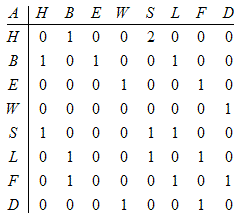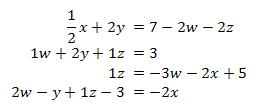Yesterday I wrote about some of the probabilities associated with the game phase 10. Today I'll investigate a few others. What are the probabilities of being dealt one of the given phases right away?
This sort of a question requires you to calculate how many different combinations of cards are possible for each hand, and divide that by how many different combinations of hands there are. The fact that there are wild cards, and that there are two blue 12's and two green 12's etc is a fact that complicates things beyond what I know how to handle, so I have ignored that in these calculations. I hope that hasn't distorted things too horrendously, and perhaps I'll return and clean this post up if I ever figure out how to handle it. If any of you readers want to instruct me, please leave a comment below.
The first calculation I will find is how many different hands of phase 10 there are. The mathematical function that does this is the choose function. (TotalToChooseFrom choose NumberNeeded) Since the deck has 108 cards, and I need to calculate (108 choose 10).
Wolfram Alpha gives us this number: 38,722,819,230,810 different hands.
(Parenthetical note, indicated redundantly by the fact that this paragraph is in parentheses... The actual number of unique hands is less than this because of the aforementioned fact that there are multiple skip cards, multiple wilds and multiple blue12's, red12's, etc. This is what I don't know how to account for. This also suggests that each of my probabilities calculated below will be too low - except that they all have issues of their own because I didn't account for wild cards or repetitions in many of their calculations either).
So, how to calculate probabilities? Let's begin with my favorite phase -- getting seven cards of all the same color. First, choose which color you'd like to use out of the four. That's (4c1). Then, not counting wilds, there are 24 cards of that color, from which you must choose 7, or (24c7). Then choose 3 cards out of all the cards that are left -- that is 101c7. Multiply these probabilites together and you get:
Ways of choosing at least 7 of same color with no wilds
(4c1)(24c7)(101c3) = 230,712,926,400
To calculate proability of being dealt this then, divide this number into the total number of hands:
.2trillion / 38 trillion = .005 or 0.5%.
Including the possiblity of wilds increases the odds a little -- and for this phase doesn't complicate calculations much. There are still 4 colors to choose from, but now you have 32 possible cards to draw from instead of just 24:
Ways of choosing at least 7 of same color with wilds
(4c1)(32c7)(101c3) = 2,243,679,609,600 which is close to 6% probability
What follows is the number of combinations for most of the other phases. Being dealt them exactly is almost always less than 1 percent so I have not calculated the probabilities, but will leave them for you if you want.
Ways of choosing a run of 7 (no wilds):
(6c1)(8c1)(8c1)(8c1)(8c1)(8c1)(8c1)(101c3) = 262,117,785,600
Ways of choosing a run of 8 (no wilds):
(5c1)(8c1)(8c1)(8c1)(8c1)(8c1)(8c1)(8c1)(100c2) = 51,904,512,000
Ways of choosing a run of 9 (no wilds):
(4c1)(8c1)(8c1)(8c1)(8c1)(8c1)(8c1)(8c1)(8c1)(99c1) = 6,643,777,536
Ways of choosing a set of 3 and another set of 3 (no wilds):
(12c2)(8c3)(8c3)(102c4) = 879,560,035,200
Ways of choosing a set of 4 and another set of 4 (no wilds):
(12c2)(8c4)(8c4)(100c2) = 1,600,830,000
Ways of choosing a set of 5 and another set of 2 (no wilds):
(12c2)(8c5)(8c2)(101c3) = 17,246,275,200
Ways of choosing a set of 5 and another set of 3 (no wilds):
(12c2)(8c5)(8c3)(100c2) = 1,024,531,200
Ways of choosing a set of 3 and another run of 4 (no wilds):
(12c1)(8c3)(9c1)(8c1)(8c1)(8c1)(101c3) = 516,044,390,400
Ways of choosing a set of 4 and another run of 4 (no wilds):
(12c1)(8c4)(9c1)(8c1)(8c1)(8c1)(100c2) = 19,160,064,000










.JPG)













